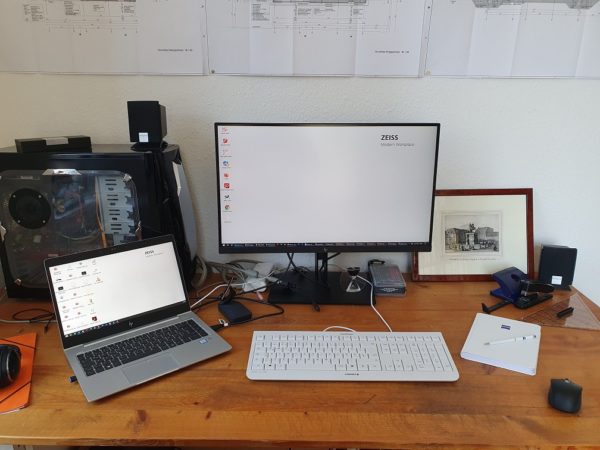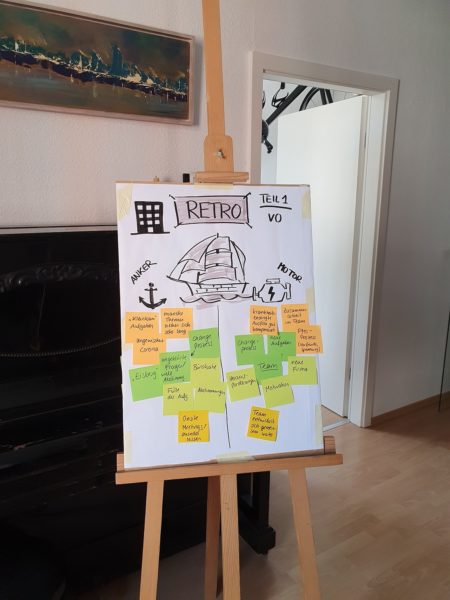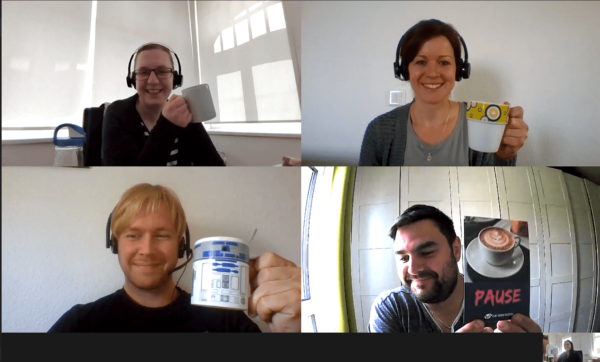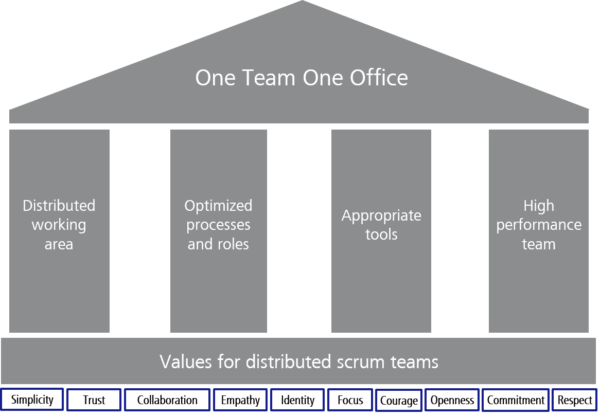The current crisis, caused by COVID-19, is challenging the most companies worldwide for several weeks now. From one moment to the next nearly 95% of our colleagues moved in to their home office. Most of them are still working from home. How does that fact affect my work in the Sales and Marketing team?
While working in distributed teams and independent of the location is quite common (have a look at our last blog post: Software Development in Corona times – Business as usual?) it was a novelty for our central services (accounting, IT, HR, Marketing, …). As an internal service provider for the employees of ZEISS Digital Innovation the main focus of our work was to be a local contact for our „customers” and react directly to their requests. Simultaneous to our organizational affiliation to Team ZEISS and the high workload that came along with the related brand change, the shift to home office confronted us with new challenges.

How did we manage this transition mainly trouble-free and while keeping up our high level of performance? By learning from agile methods!
For many years we are following the basic principles of agile procedures in our projects as well as in management and developed our own agile process based on Scrum. For our collaboration in the central services we implemented some of the values, artifacts, and methods as well. This is helping us in this difficult stage. In general, for our internal corporate communication and especially for the collaboration of my team, which now consits of five team members. At this occasion it is important to mention, that we are only orient ourselves towards these procedures and don’t apply them like they appear in textbooks.
With an iterative approach, including Planning, Review and Retrospective, we ensure that our campaigns remain innovative, that we focus on the right things even when there are many campaigns running in parallel, and steady questioning ourselves. Meetings for reflexion (similar to project retrospectives), where we deduce Lessons Learned, belong to our daily work as well as an open culture of communication, honest feedback and creative or brainstorming events. Creative work and an agile mindset require a certain readiness for flexibility, so wereorganized our collaboration methods and quickly acclimatised ourselves to the new situation.

But what does that mean in practice? Which „tools“ helped us to organize our work efficiently even in the home office and while working distributed?
Dailys
Because we didn`t meet in our office every day and did not notice directly and across the desk on which topics the other team members are working on, we quickly noticed a higher need for coordination. After a short time we established a daily meeting as a reaction. Every morning the team members sync their daily tasks and report about the tasks they dealt with the last day. We defined a timebox of 20 minutes for ourselves. It is important, that everybody gets the chance to speak and also shortly tells if there are maybe challenges that could affect their work (like too many meetings, childcare and home schooling, …). To make sure that we all stay in the defined timebox we nominated a Scrum Master who moderates the meeting. She has to ensure, that maybe upcoming discussions are clarified later in separate ad-hoc meetings and not block the daily.
Iterative Planning in short terms
In consequence of Corona and the accompanying ever-changing general conditions (like cancelled events, changing communication channels, …) we switched from a three-monthly planning cycle to a four-week period. So we can customize our tasks continuous to the quick changing priorities. To make sure that we nevertheless do not forget several long-term tasks, we have a backlog were we store all the activities which we want to work on in a long term, but are not urgent or important at the moment.
This backlog is closely linked to the next topic.
Visualization with suitable tools and a good infrastructure
Technical conditions are essential for working together. A Sharepoint or OneDrive for data sharing, video conferencing via Skype or MS Teams, a Wiki with a clear documentation of the campaigns and a joint task board are worth a mint and only a small set of the tools we are working with. To keep an eye on our tasks, we use MS Teams and the integrated Microsoft Planner. There we collect and record (similar to a Kanban Board) all our tasks and thus are able to evaluate in our Planning and Review meetings what we managed in the last sprint and what we want to do in the next iteration. As an internal service centre we have a lot and steady upcoming requests from different stakeholders, so we use the board to document all requirements the to ensure that (especially in the case of an unexpected absence or in Substitution situations) not been forgotten. In general transparency is one of our top priorities, but however we focus on the (a bit customized) agile manifesto: working software campaigns over comprehensive documentation (https://agilemanifesto.org/iso/de/manifesto.html).
Fair enough when tools and processes are working. But what about the interpersonal communication? We strive to have an atmosphere in our communication which is basing on open communication and values like trust, commitment, openness and mutual respect. And in the middle of this communication there are always humans and a working team, that must rely on each other. This team spirit also rises by the short talks in the meantime, by spending a lunch break together or making some jokes in the coffee kitchen. All this is really hard to put in practice when „social distancing“ and home office is on the daily schedule. To prevent that we drift apart as a team, we implemented a weekly virtual coffee break. We use this event to talk with a cup of coffee (or something else) about off topics and what concerns us at the moment. Just the things we would normally talk about in our breaks and in the corridor – not about thing what we have to deal with in our daily business. And of course, with video, to see each other from time to time.

Also, beyond team level there are some established formats resulting from our agile management process, that help us – e.g. our ZEISS Stand-up (general company meeting). Normally in a six week regular circle, our management informs about all important topics, data and facts. Every employee who is interested in participation, has given the opportunity to follow the explanations in his working time via Skype or on-site and ask questions afterwards. As a important cornerstone of our company information and communication this is ensuring transparency und takes since the 20.03.2020 place every week, to inform about all the actual corporate development in the crisis and the measures we adopted because of that. Next to the economic situation there were also some special topics to talk about, like the hygiene concept or the „Corona parental benefit“ when employees with children have minus hours. Another small puzzle piece, that gives us security and trust and make the corporate collaboration easier in this crisis.

